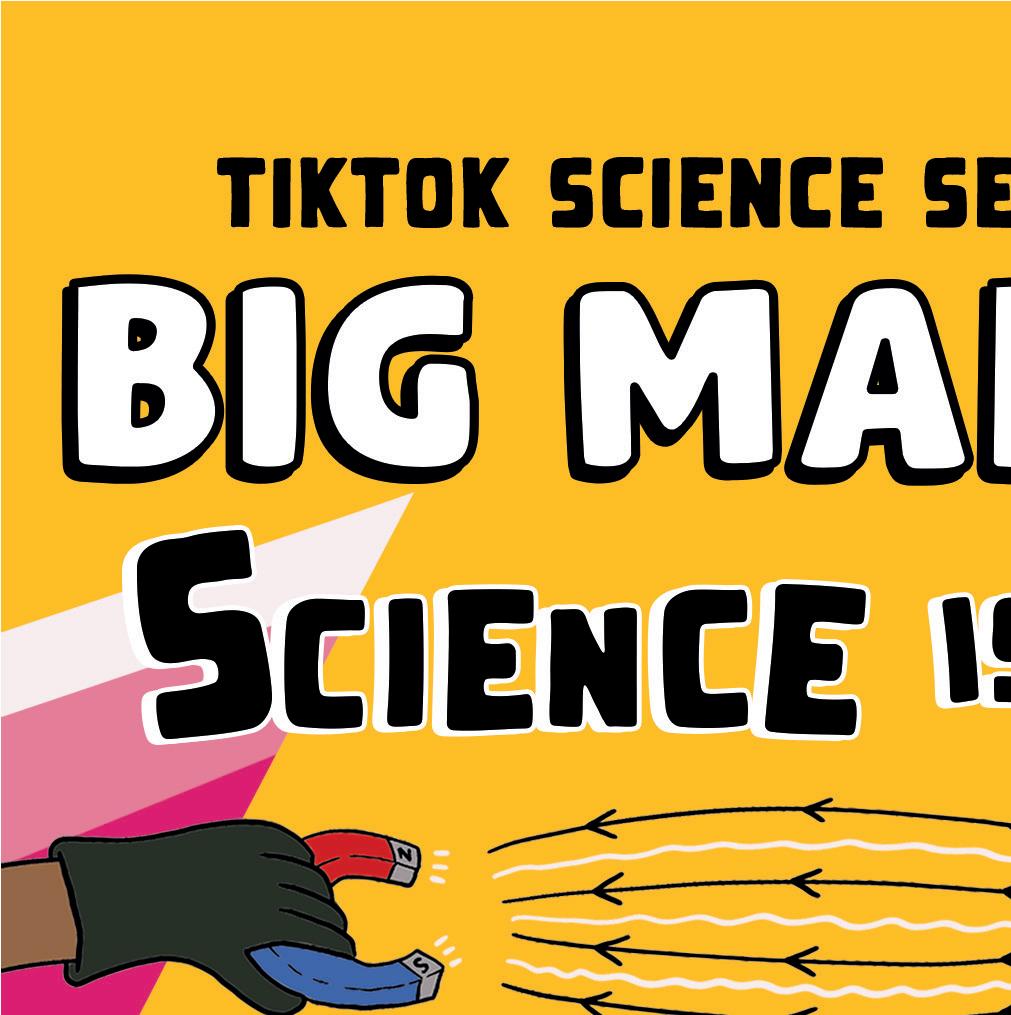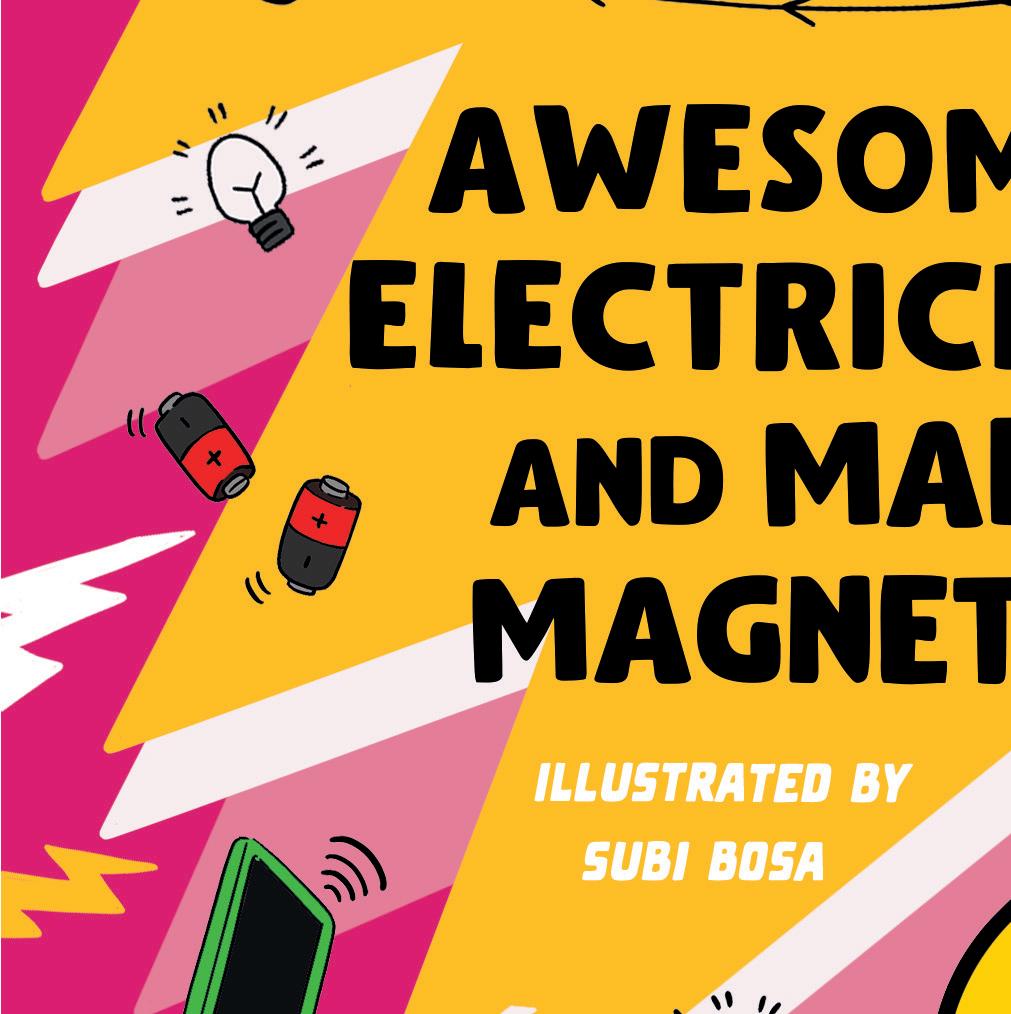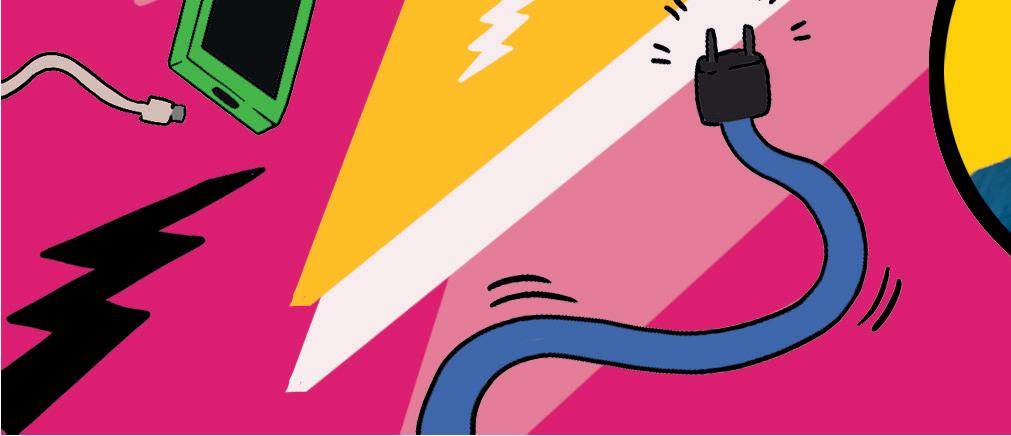










UK | USA | Canada | Ireland | Australia India | New Zealand | South Africa
Penguin Books is part of the Penguin Random House group of companies whose addresses can be found at global.penguinrandomhouse.com.
www.penguin.co.uk
www.puffin.co.uk
www.ladybird.co.uk
First published 2025
Text copyright © Emanuel Wallace, 2025
Illustration copyright © Subi Bosa, 2025
The moral right of the author and illustrator has been asserted
Penguin Random House values and supports copyright. Copyright fuels creativity, encourages diverse voices, promotes freedom of expression and supports a vibrant culture. Thank you for purchasing an authorized edition of this book and for respecting intellectual property laws by not reproducing, scanning or distributing any part of it by any means without permission. You are supporting authors and enabling Penguin Random House to continue to publish books for everyone. No part of this book may be used or reproduced in any manner for the purpose of training artificial intelligence technologies or systems. In accordance with Article 4(3) of the DSM Directive 2019/790, Penguin Random House expressly reserves this work from the text and data mining exception.
Printed and bound in Great Britain by Clays Ltd, Elograf S.p.A.
The authorized representative in the EEA is Penguin Random House Ireland, Morrison Chambers, 32 Nassau Street, Dublin D02 YH68
A CIP catalogue record for this book is available from the British Library
ISBN: 978–0–241–65383–8
All correspondence to: Puffin Books
Penguin Random House Children’s One Embassy Gardens, 8 Viaduct Gardens, London SW11 7BW
Penguin Random Hous e is committed to a sustainable future for our business , our readers and our planet. is book is made from Forest Stewardship Council® certified paper




















LEVEL: Simple Ting
EXPERIMENT 14: making shadows
DIFFICULTY LEVEL: Simple Ting






















































Hi, I’m Emanuel –but you might know me as BIG MANNY.
I’m a scientist who does explosive experiments and crazy science on TikTok. Sometimes I do these experiments in front of a live audience or even on TV! And in this book, I’m going to teach you how to do your own experiments at home and become a real-life scientist, init.
I was a very curious kid, and growing up, I had loads of questions. Science always fascinated me because it taught me about the real world – the things I can see, feel, touch, hear and taste.
Like, say, the pull I feel when I bring two magnets close together. How can these magnets pull together but I can’t see anything pulling them? That’s mad.
Or the rainbows I see after it rains – where do those colours come from ?
And why does my shadow copy everything I do ?
Science gave me the answers to these questions. But learning the answers only led me to ask even more questions! So I decided to study science at university and got two degrees in biomedical science. After I graduated, I worked in a school as a science technician.
In this book, we’re gonna learn all about physics . Physics is all around us – we can see it in everything we do, and I mean that literally because for us to see, we need light. Light reflects – or bounces back – off objects and enters our eyes. And the study of light is part of physics.
So what is physics? OK, so first, I need to introduce you to a new word. This word is matter. Now, everything in the world is made up of either one of two things: physical matter or energy. You’re made of matter, as is this book, and even the trees and buildings you see around you.
Physical matter is things like solids, liquids and gases. So everything that you can see, touch and feel is physical matter.
Energy is stuff that we can’t touch – or sometimes even see – but it’s still there. Sound is an example of energy. We can’t see sound, but we can definitely hear it, and feel it too!

If you’ve ever been sat near a big, bass-y speaker then you will have felt the sound vibrating through your whole body.
Another example of energy is magnetism . We can’t actually see a magnetic force pulling two metals together, but we can feel it.
Even mobile phones use energy matter. Every time a phone call is made, radio waves travel from a mobile-phone mast to the mobile phone itself. These radio waves are invisible to the human eye, but there are millions of them travelling through the air every single second!
Physical matter is made up of atoms . But what is an atom ? An atom is one of the smallest things in the entire universe. If you zoomed in on anything super closely, you would eventually see atoms. Atoms are one of the things to make up physical matter. And when you join two or more atoms together, it makes a molecule . An example of a molecule is water – a water molecule is made up of two hydrogen atoms and one oxygen.
Loads of water molecules group together to form the flowing water that we love to drink.
Right, to explain this, imagine I took your hand and placed it under a microscope, then began to zoom in. First, we’ll see the tiny hairs on your skin, then as
we zoom in a bit more, we’ll see the likkle holes that these hairs grow from (these are called pores). Let’s zoom in a bit more, and we’ll see the individual cells that make up your skin. If we zoom in on those cells, we’ll see some DNA – the genetic code that controls things like whether you have blue or brown eyes, straight or curly hair. DNA is made up of atoms.
On the other hand, energy – such as sound and light – is not made of atoms. Instead, energy is made of waves. We can’t actually touch these waves, but we can see and feel their effects in the world.
To prove this, grab a container, go outside and try to capture a piece of sunlight in the container. You just can’t do it – it’s impossible! We can’t touch light because it’s not a physical object, but we can feel the warmth that comes from the Sun’s rays. Sound isn’t a physical object, so we can’t touch that either. The same goes for the radio waves from a mobile phone.
Let’s take a closer look at this energy that moves in waves. There’s bare different types of waves – there’s a whole spectrum! This spectrum is called the electromagnetic spectrum , and it includes those light waves and radio waves that we spoke about.
Not all waves are the same – some are long, whereas others are short. For example, radio waves can be hundreds of miles long! But light waves are really short – less than 1 millimetre (mm) long.
We use different waves for different purposes. There are seven different types of waves on the electromagnetic spectrum , and I’ve listed them here from longest to shortest:
Radio waves: Mobile phones, TV and radio stations all use radio waves to send messages, calls or programmes from one place to another.
Microwaves: Microwave ovens use microwaves to heat up food! The waves travel into your food and cook it from the inside. Mad ting.
Infrared rays: These are used in remote controls, thermometers and barcode scanners. If you see that red light that comes from a barcode scanner – that’s infrared!
Visible light: Clue's in the name, fam! This is the light our eyes actually process! Visible light includes natural light from the Sun, and artificial or manmade light such as light from lightbulbs. Cameras and telescopes use visible light in order to capture images and magnify them (make them bigger).
Ultraviolet (or UV) light: Now, ultraviolet (or UV) light is kinda special. Have you ever seen one of those invisible-ink pens where you need a special purple light for the ink to show up? That’s UV light, and it makes the ink become visible because the ink contains special substances that can only be seen under this type of light. That’s how you can write secret messages and that!
X-rays: Have you ever had an X-ray? This is when doctors take pictures of your bones – it’s a mad ting. X-rays are so powerful that they can travel through your skin and muscles, but not through your bones, which is why bones show up
as white shadows and help the doctors work out what might be going on with you. Crazy stuff.
Gamma rays: These are even more powerful than X-rays, and doctors can also use these to take images of the body.
OK, so in this book, we’re gonna get to know some different types of energy – let’s call them our main characters.
One of the characters we’re gonna meet is electricity . Electricity is super charged up – I’ll be honest, it’s a bit of a prankster and loves to shock you! You don’t really wanna mess with electricity because it's bare powerful. Electricity powers all our household electrical appliances such as fridges, kettles, ovens and more.
Next up we have light . Now light is really friendly and light-hearted, and loves to make people laugh with funny jokes. Light is also a key character because without light, we would all be in darkness! Our eyes need light to be able to see.
We’re also going to meet the marvellous magnet . Now magnet has got real superpowers – it can attract anything it wants without lifting a finger. Once magnet attracts something, it’s hard to escape its pull. You can normally find magnet chilling out on the fridge door.
Lastly, we have sound . Now sound just loves to vibe and play music. I can’t lie; sound can be a bit loud sometimes, but overall it’s pretty cool. You can catch it in the music studio with the piano and drums.

Now that we know what physics is all about, it’s time to get experimenting. Before we do, I’m gonna need you to watch out for a few things. You’ll notice each experiment has a difficulty rating, from SIMPLE TING (easy), to COME ON NOW (medium) and BIG SCIENCE (advanced). The SIMPLE TING experiments are designed to be easy enough for you to do them by yourself. If I say COME ON NOW , you may need an adult to help you, so ask an adult to be present. And when we get to BIG SCIENCE , this is proper advanced science, so defo ask an adult to help you and don’t try these alone!

DIFFICULTY LEVEL: Simple Ting


DIFFICULTY LEVEL: Come On Now



DIFFICULTY LEVEL: Big Science



To give you a bit of a head start, sometimes I’ve added results from me, but other times I’ve left you to fill in your own.


A few of the experiments can also get a bit messy! Wherever you see the splat symbol, make sure you get an adult to help you with the experiment, and with cleaning up afterwards.



As well as scientific experiments, this book is full of scientific facts and knowledge – some of it is real easy, but some of it is bare challenging to help you level up your science game. Where you see the level-up symbol, it means this is the tricky stuff, so have a go if you want to challenge yourself – but if you want to skip it and just try the experiment, that’s cool too.
If you don’t know what some words mean, there’s also a glossary on p.199 to help you.

Ite cool, safety is bare important still, I can’t lie. Before we do any experiments, here are some important steps to follow:
Scientists always wear goggles to protect our eyes when we’re doing experiments. Goggles make sure that no liquids splash into our eyes and hurt us. If you don’t have lab goggles at home, swimming goggles also work fine for home experiments!










For static electricity experiments, make sure your hands are completely dry. Keep electronics and flammable materials away from static electricity experiments.






Whenever we are doing an experiment, we should always be standing up. If something spills, it’s easier to move out of the way if we are standing up instead of sitting down. (If you are a wheelchair user or if standing for periods of time might be hard for you, speak to your adult to work out the best way to conduct the experiment safely together.)

If you have any pets, or younger brothers or sisters, make sure they’re safely out of the way!
Make sure to dispose of any mixtures safely. If you’re not sure of the best way to do this, ask a grown-up for their advice. And remember to clear up any mess afterwards!




